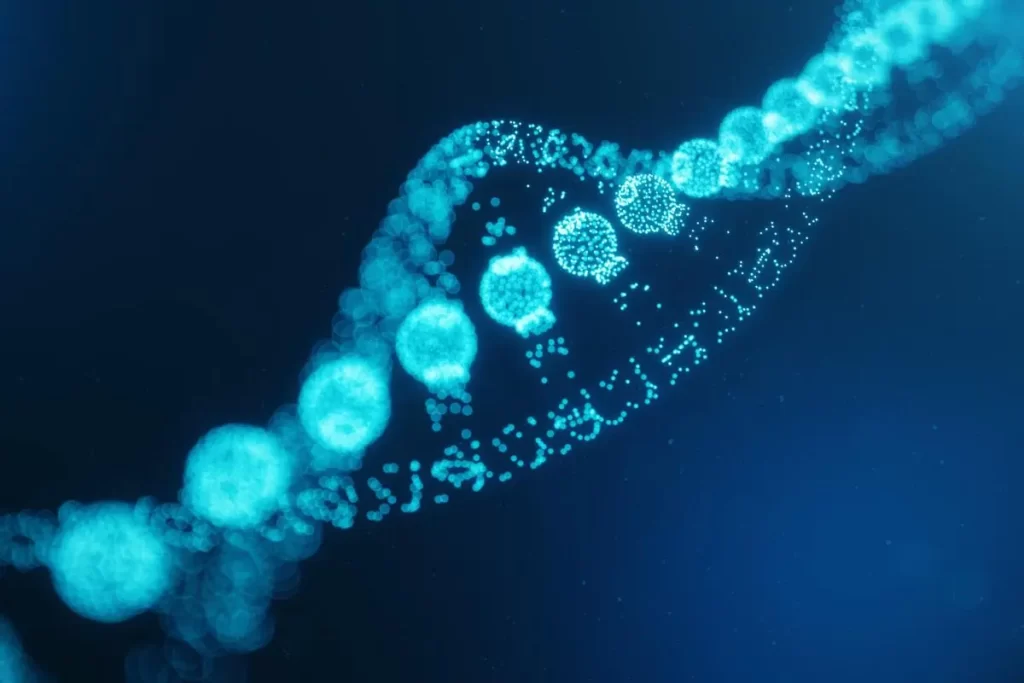Introduction: Fabry disease was reported almost simultaneously by two dermatologists, Anderson (UK) and Fabry (Germany) in 1898. The disease usually involves multiple organs and systems, with symptoms of skin, eyes, ears, heart, kidney, nervous system, and gastrointestinal tract. The clinical manifestations are more common in men than women. Fabry disease diagnosis symptoms types and treatment
1. Learn about Fabry’s disease
A. Is Fabry disease common? Can it be inherited?
Rare and hereditary. So far, the exact incidence of Fabry disease in the population is still unclear. It is estimated that the prevalence of Fabry disease in Caucasians is 1/117000~1/17000. The disease can be found in different nationalities and different races, and is an X-linked recessive genetic disease. Fabry disease diagnosis symptoms types and treatment
B. What are the types of Fabry disease?

Depending on the clinical presentation, Fabry disease can be divided into two types:
After typical: its α-GalA activity is significantly reduced, or even completely disappeared (<5%), may be onset in childhood, generally earlier in boys than in girls, pain and angiokeratoma are most common, pain starts from the extremities Gradually spread to the limbs and other parts of the body, angiokeratoma can involve the whole body, the most common around the umbilicus and the knee, and can be complicated by multi-system damage such as brain, kidney, heart, peripheral nerves, etc.; Delayed type: partial decrease in α-GalA activity (5%), often limited to renal or cardiac involvement. Fabry disease diagnosis symptoms types and treatment
C. What are the symptoms of Fabry disease?
The disease is a multi-organ, multi-system disease. Because deposition of the α-GalA substrate GL3 is a gradual process, the clinical manifestations of Fabury’s disease also vary with age.

Facial features: Male patients develop facial features between the ages of 12 and 14 years, manifesting as a bulge of the supraorbital ridge, a raised forehead, and thickened lips. Neuralgia: About 72% of patients experience neuralgia, often described as an unbearable burning sensation on the soles and palms of the feet that spreads to the extremities, and can be caused by stress, extreme heat or cold, and intense physical activity of. The average age of onset is about 10 years old.
In addition, there may be little or no sweating, and severe autonomic nerve damage can lead to impaired blood pressure regulation and syncope. Rarely have cranial nerve damage, such as sensorineural deafness. Cerebral ischemia (TIA) or ischemic stroke are common central nervous system manifestations, mainly including hemiplegia, hemianopia, vertigo, ataxia, and dysarthria, with nonspecific symptoms including inattention, headache, cognitive function obstacles, etc.

Epidermal angiokeratoma: It is a type of skin angiokeratoma, which is commonly found in the classic type of percutaneous small raised erythema, mostly distributed in the “bath” area, that is, the reproductive organs, scrotum, buttocks, inner thighs. With the progression of the disease, the number and distribution of angiokeratoma will gradually increase. Some patients may experience thickened lips or a garlicky nose. About 70% of patients will have the above skin symptoms, and the average age of onset is around 17 years old.
2. How is the disease diagnosed? Just get to know
A. What are the characteristics of Fabry disease? When is Fabry’s disease suspected?
In men and women diagnosed with clinical features of Fabry disease, evaluation for Fabry disease should be performed, in particular: intermittent severe pain in the extremities (eg, fingers or toes, etc.); cutaneous vascular lesions (angiokeratoderma); row Decreased sweating (hypohidrosis); unexplained left ventricular hypertrophy in early adulthood; stroke of unknown etiology in early adulthood; CKD of unknown etiology in early adulthood; incidental discovery of multiple renal sinus cysts.
B. How is Fabry disease diagnosed?
Genetic diagnosis is the gold indicator of Fabry disease, and the GLA gene can be detected from peripheral blood DNA, RNA or DNA extracted from hair follicles. Decreased leukocyte or plasma α-GalA activity can usually be diagnosed when the family history and genotype are fully established. For female carriers, α-GalA gene mutation analysis is required to make a diagnosis.
C. What inspection does Fabris need to do?
Blood, urine GL3 and plasma deacetylated GL3 (lyso-GL3) determination, in addition to routine examination, but also to do α-GalA enzyme activity detection, pathological examination and genetic testing.
Determination of GalA enzyme activity: The enzyme activity in the blood of male patients is often significantly decreased, which can be diagnosed by enzyme activity measurement; the enzyme activity of 30% of female patients can be within the normal range. Determination of serum GL3, urine GL3 (lyso-GL3) and plasma deacetylated GL3 (lyso-GL3): it can be used as a biochemical diagnostic index for diagnosing Fabry disease, with higher sensitivity than enzyme activity detection, among which plasma lyso-GL3 The detection sensitivity is higher. Pathology: Take kidney, skin, heart muscle, or nerve tissue to help diagnose disease.
D. Which disease should it be distinguished from?
Gout: need to be differentiated from growing pains, juvenile rheumatoid arthritis, Raynaud’s syndrome, sensory neuropathy caused by other causes, and erythematosus palsy. Gastrointestinal symptoms: It can be differentiated from gastroenteritis, indigestion, and irritable bowel syndrome. Epidermal angiokeratoma: Differential from allergic purpura or other rashes. Abnormal renal function: Differential from primary glomerulonephritis or other secondary glomerular diseases. Heart fatigue: hypertrophic cardiomyopathy, arrhythmia, and cardiac insufficiency caused by other causes.
3. How is Fabry disease treated? Let’s find out together

A. Which department should I go to for Fabry disease?
Because Fabry disease is a multi-system disease, according to the patient’s own symptoms, he can go to dermatology, cardiovascular medicine, nephrology and other related departments for treatment.
B. How is Fabry disease treated?
Treatment of Fabry’s disease has focused on supplementation of the missing or deficient enzyme (α-GalA). Mainly divided into specific and non-specific therapies:
For hypertensive patients with Fabry disease, corresponding treatment is mainly given to the conditions affecting various organs, such as the use of renin-angiotensin system inhibitors to treat hypertensive patients with Fabry disease; for patients with chronic kidney disease Complications are treated with standard care and, if necessary, dialysis and/or transplantation.
Specific therapy: Enzyme replacement therapy (ERT) is an enzyme therapy that uses gene recombination technology to synthesize α-GalA in vitro to replace the defect in vivo. The results of a variety of randomized controlled and open-ended clinical trials have shown that recombinant human α-GalA replacement therapy can reduce the deposition of GL3 in the patient’s cells, effectively relieve the patient’s extremity pain, gastrointestinal symptoms, and improve myocardial hypertrophy and stability. Renal function, improving patient quality of life and prognosis. There are two types of human α-GalA: α-galactosidase and β-galactosidase. But now the cost is higher.

C. Is there a better way to treat Fabry disease?
Enzyme-linked immunotherapy is a new type of specific therapy that treats by increasing enzyme activity. Phase II clinical trials have been completed. The results show that it can increase the enzyme activity of mutant patients and has good safety. However, its disadvantage is that The therapy is selective for mutations. This is especially the case in patients with certain genetic mutations. In addition, some new treatment methods such as substrate degradation method, protein stability regulation therapy, gene therapy, etc. are also in progress.
Conclusion: Patients diagnosed with Fabry disease require detailed pedigree investigation, all patients require heterozygosity testing in adult females, and appropriate genetic counseling. For male patients who need to give birth, it is recommended that giving birth to a son can avoid the inheritance of gene mutations, and gender identification can be carried out 3 months ago. Women should do prenatal diagnosis when they want to give birth. Read more updates about health tips on http://www.facefof.com
